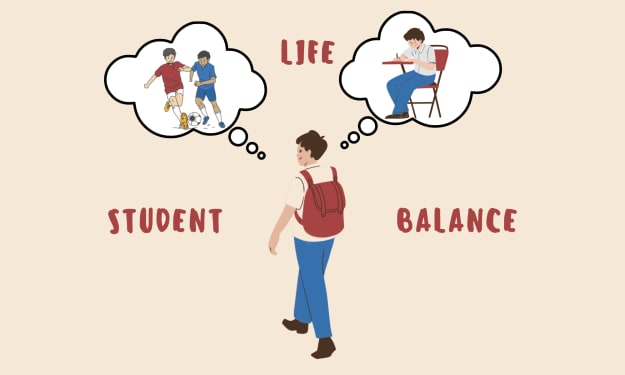The Role of Technology in Modern Education
Bridging the Gap and Shaping the Future

## The Role of Technology in Modern Education: Bridging the Gap and Shaping the Future
In today's rapidly evolving world, technology plays a pivotal role in shaping various aspects of our lives, including education. The integration of technology in education has revolutionized the way we teach and learn, offering unprecedented opportunities and presenting new challenges. This article explores the transformative impact of technology on education, the benefits and challenges it brings, and the future prospects of tech-enhanced learning.
### The Evolution of Educational Technology
The use of technology in education has evolved significantly over the past few decades. From the early days of educational television and radio programs to the current era of digital classrooms and online learning platforms, technology has continually reshaped educational landscapes.
1. **Early Innovations:** The introduction of computers in schools during the 1980s marked the beginning of the digital age in education. Early educational software focused on basic skills such as math and reading.
2. **Internet and Multimedia:** The advent of the internet in the 1990s brought a wealth of information to students' fingertips. Multimedia resources, including videos and interactive tutorials, enhanced traditional learning methods.
3. **E-Learning and Online Courses:** The 2000s saw the rise of e-learning platforms and Massive Open Online Courses (MOOCs), democratizing access to education and enabling lifelong learning.
4. **Mobile Learning and Apps:** With the proliferation of smartphones and tablets, mobile learning apps have become popular, allowing students to learn anytime and anywhere.
5. **Artificial Intelligence and Virtual Reality:** Today, cutting-edge technologies like artificial intelligence (AI) and virtual reality (VR) are transforming educational experiences, making learning more personalized and immersive.
### Benefits of Technology in Education
The integration of technology in education offers numerous benefits that enhance the teaching and learning experience.
#### Personalized Learning
Technology enables personalized learning experiences tailored to individual students' needs, abilities, and learning styles. Key aspects include:
1. **Adaptive Learning Software:** These programs use algorithms to adjust content and pacing based on students' performance, providing a customized learning experience.
2. **Data-Driven Insights:** Teachers can use data analytics to identify students' strengths and weaknesses, allowing for targeted interventions and support.
3. **Self-Paced Learning:** Online courses and resources allow students to learn at their own pace, ensuring they fully grasp concepts before moving on.
#### Enhanced Engagement and Motivation
Interactive and multimedia-rich content can make learning more engaging and enjoyable for students.
1. **Gamification:** Incorporating game elements, such as points, badges, and leaderboards, into educational activities can increase motivation and participation.
2. **Virtual and Augmented Reality:** VR and AR technologies provide immersive learning experiences, allowing students to explore complex subjects in a hands-on manner.
3. **Interactive Simulations:** Tools like virtual labs and simulations enable students to experiment and explore concepts in a risk-free environment.
#### Access to a Wealth of Resources
Technology provides access to an extensive range of educational resources, breaking down geographical and economic barriers.
1. **Online Libraries and Databases:** Students can access vast digital libraries, academic journals, and research databases, enhancing their research capabilities.
2. **Educational Videos and Tutorials:** Platforms like YouTube and Khan Academy offer a plethora of free educational videos and tutorials on diverse subjects.
3. **E-Books and Digital Textbooks:** Digital textbooks and e-books are often more affordable and accessible than traditional print versions, reducing costs for students.
#### Collaboration and Communication
Technology facilitates collaboration and communication among students and teachers, both locally and globally.
1. **Collaborative Tools:** Platforms like Google Classroom, Microsoft Teams, and Zoom enable real-time collaboration on projects and assignments.
2. **Global Learning Communities:** Online forums and social media groups connect students and educators worldwide, fostering cross-cultural exchanges and collaborative learning.
3. **Instant Feedback:** Digital tools allow teachers to provide immediate feedback on assignments and assessments, helping students improve their performance.
### Challenges of Technology in Education
Despite the numerous benefits, the integration of technology in education also presents significant challenges that need to be addressed.
#### Digital Divide
The digital divide refers to the gap between those who have access to technology and the internet and those who do not. This disparity can exacerbate existing inequalities in education.
1. **Access to Devices:** Not all students have access to computers, tablets, or smartphones, which can hinder their ability to participate in digital learning.
2. **Internet Connectivity:** Reliable internet access is essential for online learning. Students in rural or low-income areas often face connectivity issues.
3. **Tech Literacy:** Both students and teachers need the skills to effectively use technology. Lack of digital literacy can impede the adoption of tech-enhanced learning.
#### Quality and Reliability of Content
The vast amount of information available online can be overwhelming, and not all of it is accurate or reliable.
1. **Information Overload:** Students may struggle to navigate and discern credible sources from the vast amount of information available online.
2. **Quality of Online Courses:** The quality of online courses and resources can vary significantly. Ensuring that content is accurate, engaging, and pedagogically sound is crucial.
3. **Cybersecurity:** Protecting students' personal data and ensuring the security of online platforms is a growing concern.
#### Teacher Training and Support
Effective integration of technology in education requires well-trained and supported educators.
1. **Professional Development:** Ongoing training and support are necessary to help teachers integrate technology effectively into their teaching practices.
2. **Resistance to Change:** Some educators may be resistant to adopting new technologies due to lack of familiarity or skepticism about their effectiveness.
3. **Workload:** Integrating technology can initially increase teachers' workload as they adapt to new tools and methods.
### The Future of Technology in Education
As technology continues to advance, its role in education is likely to expand and evolve. Several emerging trends and innovations hold promise for the future of tech-enhanced learning.
#### Artificial Intelligence and Machine Learning
AI and machine learning have the potential to revolutionize education by providing highly personalized learning experiences and automating administrative tasks.
1. **Intelligent Tutoring Systems:** AI-powered tutoring systems can provide personalized instruction and feedback, adapting to each student's learning needs.
2. **Automated Grading:** Machine learning algorithms can automate grading of assignments and assessments, freeing up teachers' time for more meaningful interactions with students.
3. **Predictive Analytics:** AI can analyze student data to predict learning outcomes and identify at-risk students, enabling timely interventions.
#### Virtual and Augmented Reality
VR and AR technologies offer immersive and interactive learning experiences that can enhance understanding and retention of complex subjects.
1. **Virtual Classrooms:** VR can create realistic virtual classrooms where students can interact with teachers and peers in a simulated environment.
2. **Virtual Field Trips:** AR and VR can take students on virtual field trips to historical sites, museums, and even outer space, providing experiential learning opportunities.
3. **Hands-On Learning:** VR and AR can simulate laboratory experiments, surgical procedures, and engineering tasks, allowing students to practice skills in a safe, controlled environment.
#### Blockchain Technology
Blockchain technology has the potential to enhance transparency, security, and efficiency in education.
1. **Secure Credentials:** Blockchain can provide a secure and tamper-proof way to issue and verify academic credentials and certificates.
2. **Transparent Assessment:** Blockchain can ensure the integrity and transparency of assessments and evaluations.
3. **Decentralized Learning Platforms:** Blockchain can support the development of decentralized learning platforms that provide access to a wide range of educational resources and services.
### Conclusion
The integration of technology in education has the potential to transform teaching and learning, making education more accessible, engaging, and effective. However, realizing this potential requires addressing significant challenges, including the digital divide, quality of content, and teacher training.
By promoting equitable access to technology, ensuring the quality and reliability of digital resources, and providing ongoing support for educators, we can harness the power of technology to create a more inclusive and dynamic educational landscape. As we look to the future, emerging technologies such as AI, VR, and blockchain hold promise for further innovations that can shape the future of education and prepare students for the challenges of the 21st century.
About the Creator
Enjoyed the story? Support the Creator.
Subscribe for free to receive all their stories in your feed. You could also pledge your support or give them a one-off tip, letting them know you appreciate their work.





Comments
There are no comments for this story
Be the first to respond and start the conversation.